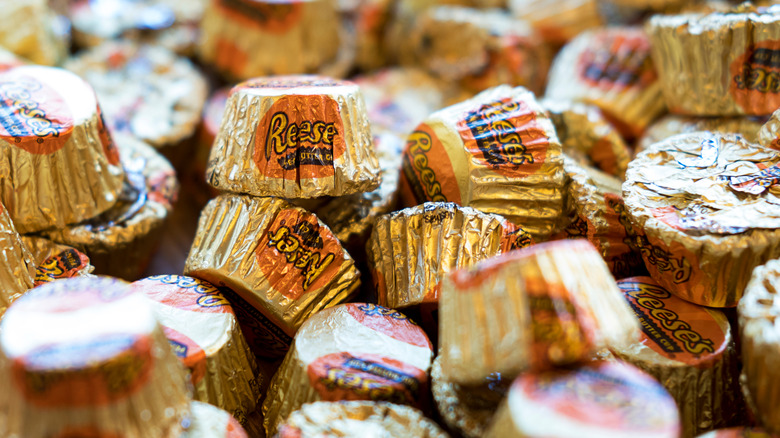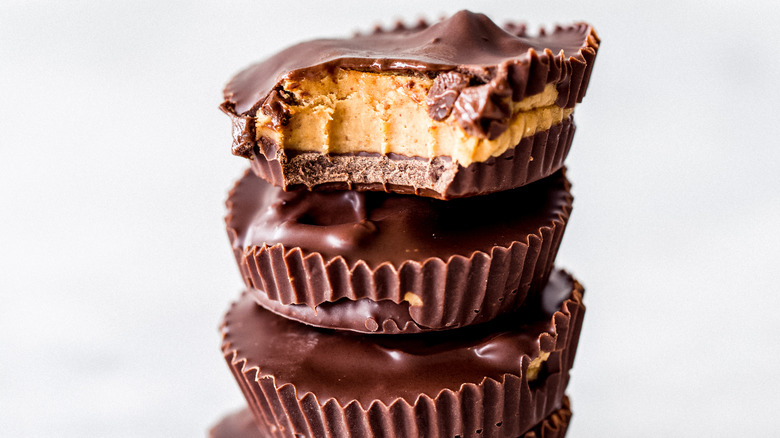The Scientific Reason Reese's Taste Really Good
Whether in the form of peanut butter cups, pieces, or minis, the signature combination of chocolate and peanut butter in Reese's candies can be hard to resist. While many of the most cravable mass-produced food products like Doritos and McDonald's french fries are known for using MSG to produce that mouth-watering quality, it's not the case for Reese's — but there's still something specific about these bites that makes us crave them.
According to Gregory Ziegler, professor of food science at Penn State University, the flavor profiles of chocolate and peanut butter are simply enough to create a salty and sweet match made in heaven, sans the MSG (via Mic). This is an example of "dynamic sensory contrast," Ziegler explained, and it's a phenomenon in food science that basically means opposites attract.
In Reese's, it applies to both the flavor and texture. While the chocolate is sweet and smooth, the peanut butter is salty and crumbly. When combined, it's an exciting experience for your taste buds — which is the dynamic sensory contrast at work. Seems like the food scientists behind the Reese's recipe got the balance of the chocolate and peanut butter down to a T.
Chocolate and peanut butter isn't just an acquired taste
Reese's has made a few appearance in the popular YouTube content series where British people try American candy for the first time (seen on the channel here) – and unlike other trial foods that are scoffed at, everyone automatically loves this pick. While other peanut butter snacks like PB&J and apples with peanut butter aren't popular outside the US, chocolate and peanut butter doesn't seem fall into the category of weird food combos that only Americans love because they grew up eating them and therefore acquired a taste.
In fact, the combination of chocolate and peanut butter is an easy-to-love one because of chemistry, specifically something known as the Maillard reaction, as Professor Ziegler told Mic. Food52 further explains that the Maillard reaction refers to "a series of chemical reactions between amino acids (the building blocks of proteins) and carbohydrates (the building blocks of sugars)" that occurs when certain foods are cooked, uniquely altering the taste and smell. For chocolate and peanut butter, the Maillard reaction begins as soon as the cocoa beans and the peanuts are roasted. Even before they become Reese's, chocolate and peanut butter are meant to be, all thanks to science.

